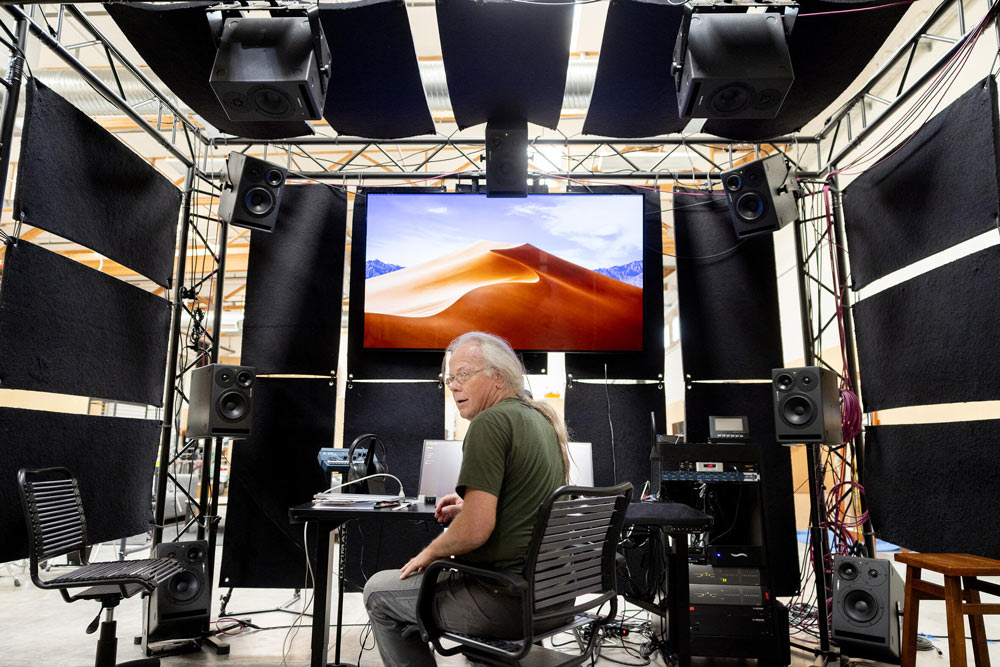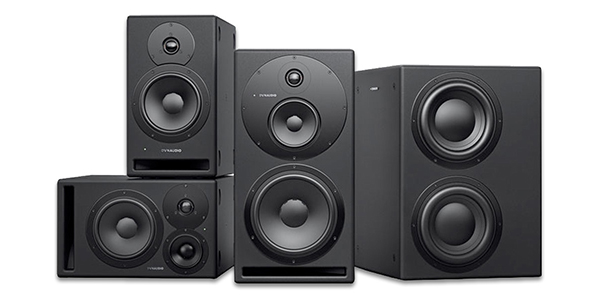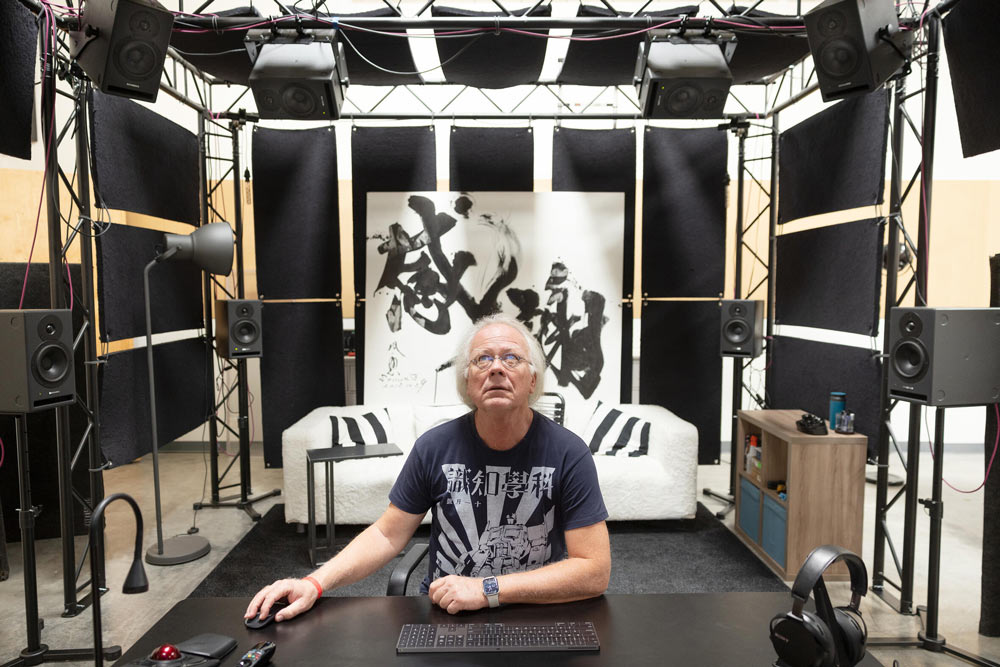American producer and engineer Greg Penny has produced, mixed and performed on some of the biggest selling albums of the past 35 years.
Born into a musical family, his parents Hank Penny and Sue Thompson were themselves prolific musicians. But it was primarily behind the mixing desk that Greg saw his future, leading to a remarkable career in production.
With a credits list that includes world-renowned artists such as Sting, Cher, Lulu, Norah Jones and Harry Styles, Greg Penny’s discography also includes several productions for K.D. Lang, including two of the Canadian singer-songwriter’s Grammy award-winning albums, Absolute Torch and Twang and Ingénue.
It was his work on Ingénue that caught the ear of none other than Sir Elton John. Already a friend of Sir Elton, Greg produced a duet between the English superstar and K.D. Lang in 1993 – a collaboration that signalled the start of a long-term working relationship between the pair, and lead to Greg mixing Elton John’s 1994 studio album Made in England.
Having cut his teeth in the world of stereo, Greg has now turned his attention to bringing immersive audio to the masses – with Dolby’s Atmos format in particular creating huge waves in recent years across music, film and broadcast sound.
As such, professional recording studios worldwide have been adapting their spaces to cater for the growing demand for immersive audio mixes, adding significant numbers of additional studio monitors and subwoofers to meet the requirements of the latest multi-channel formats.
For Greg Penny, Elton John’s level of trust in his artistic sensibilities continues to this day, and Greg was recently tasked with remixing Elton’s back-catalogue from stereo to immersive, including the iconic hit single Rocketman.
Greg spoke to Dynaudio about his newly-designed immersive studio, built around Dynaudio’s Core Series of studio monitors. No strangers to the world of immersive audio, monitors from all three of Dynaudio’s PRO ranges have been employed for purpose-built Atmos studios around the world, with the BM5 MKIII and LYD Series offering a more cost-effective entry to the world of immersive mixing.
Watch Dynaudio’s video interview with Greg below, or read on to learn more about his new Atmos mixing environment, which he operates out of his hometown of Ojai, California.
Studio Masters: Greg Penny
See more videos at Synthax TV
 A Modular Immersive Studio
A Modular Immersive Studio
“The space was available, where we wanted it to be, next to a smaller room. And the solution we found to keep the sound controlled was this crazy structure,” says Greg Penny on the design of his new space.
Somewhat unconventionally for an Atmos rig, the space occupies a corner of a warehouse, with the bones constructed from lighting trussing, and compressed cotton fabric acting as walls. The heavyweight cotton material – weighing six pounds per inch – was ordered by the box-load.
“They’re not the most cost-effective things in the world to buy,” continues Greg in regards to the steel truss skeleton. “But because you can make a room out of them that’s virtually indestructible, and because it comes together like a Lego set, it has a pretty small footprint when you break it down.”
Greg then cut and punched the sheets to size, creating a ‘room’ made from numerous fabric panels on each side, with the space unusually featuring large gaps between the makeshift walls. As it turned out, Greg found this to have a positive effect on the acoustics – creating the illusion of a much larger space – and with the added benefit that the structure can easily be moved and resized if needed.
“We could enclose it, but we felt that as we were using it, there wasn’t any point, because it was really comfortable,” elaborates Greg. “You don’t feel that compression that you feel out of a small room.”
Working With Multiple Immersive Formats
Whilst Dolby Atmos is arguably the word on everyone’s lips right now, there are of course a number of other immersive audio formats such as Auro-3D, DTS:X and Ambisonics. Whilst Greg’s new setup is designed for working primarily with Atmos, he also mixes for Sony’s 360 Reality Audio format.
For mixing in Sony 360RA, a full 7.1.4 Atmos arrangement is combined with a top-front LCR and three-way side speakers. The 18-speaker setup (that Greg jokes is “not nearly enough, but gets the job done”), is by extension also capable of 5.1 and 7.1.
Working in two immersive formats is not without its issues – namely due to Atmos and 360RA having different specs for monitoring configurations and speaker positions. 360RA calls for nine matched monitors in the front, something that Greg’s setup had a workaround for.
”In this case, we cheated it because of the real-estate in the room,” Greg says. “We didn’t want to have to move our Dynaudio Core Sub every time we switch over to listen to something in the 360 system. So our front end of the room has a phantom centre. And it works fine.“
The formats differ spatially too, which the design of Greg’s space also accounts for.
“The Sony 360 system ends with the high speakers; the room ends here,” he remarks, pointing at the Atmos side speakers. “So all we have to do when we need double-duty, is to move our side Atmos speakers to be exactly even with the pitch of the rear of the Sony speakers. The Sony speaker’s room stops at this point, so it’s only the Atmos system that uses the speakers back in the corner.”
“She just turned around and said, ‘I can’t believe it, I’ve never heard music like this’”
 Creating An Immersive Experience
Creating An Immersive Experience
Taking music only ever heard in stereo and transforming it into a three-dimensional soundscape can be a profound experience, and the power of hearing a beloved track remixed for Dolby Atmos or Sony 360RA can’t be understated.
According to Greg, “laughter” is a common first-time reaction, often accompanied by “slack-jawed amazement”. And even tears, with Greg recalling one journalist welling up upon first hearing an Atmos remixed Sting track.
“She just turned around and said, ‘I can’t believe it, I’ve never heard music like this’’ he laughs. “Then she was up dancing for the next song!”
For mix engineers, immersive audio presents both a new workflow and methodology in the studio. At the heart of Atmos mixing is Dolby’s Renderer, a production tool that generates positional metadata, allowing engineers to accurately place elements within the 360˚ soundfield.
Up to 128 inputs can be rendered within the system and each can be freely directed within the space, providing everything from subtle spatial enhancements – such as rear-wall reflections and widening the soundstage – to over the top FX, with 360˚ panning and multiple ping-pong delays.
Despite the temptation to apply all sorts of extreme effects, Greg says that most of the time its better to exercise restraint.
“I’ve had that happen a couple of times,” Greg recalls. “I’d be working on something serious, and someone will come in and say, ‘Man, you’ve got to move stuff’. So we do, and then at the end they say, ‘There’s too much moving’”.
“My objective is to emotionally impact the listener. If you can create that experience, then the machine goes away, and what lingers – it could be ten seconds after, or for years to come – is that they’ve had this amazing experience.”
“That’s another reason why I love the Core series: they’re super easy on my ears”
 The sound for Greg’s studio is provided exclusively by monitors from Dynaudio’s flagship Core range. A group of Core 47s make up the front-facing elements, with Core 7s used at the rear and above. Low frequencies are capably covered by a Dynaudio Core Sub.
The sound for Greg’s studio is provided exclusively by monitors from Dynaudio’s flagship Core range. A group of Core 47s make up the front-facing elements, with Core 7s used at the rear and above. Low frequencies are capably covered by a Dynaudio Core Sub.
“The front of the room is all three-way Core 47s, because we were need real clarity and definition out of vocals, and things that are generally in the front of you in that immersive mix,” Greg states. “And then you’ve got these four speakers overhead in addition to the sub.”
“It was interesting because the big experiment for us was, if we put three-ways in the front, what will happen if there are two-ways, you know, around the back and above us? But they’re super harmonious. It works great.”
With 18 speakers across the entire rig, there’s a lot of sound coming directly at Greg from all directions, sometimes at very high SPL, with plenty of power on offer from the Core 47’s built-in 500 watt amplifiers (for the woofers and mid-range drivers), and 150 watts for each tweeter. Fortunately, Dynaudio speakers are designed to sound just as accurate and revealing at low levels too, and the Core Series are no exception.
“That’s another reason why I love the Core series: they’re super easy on my ears, and I don’t work at high volume,” Greg says, full of praise for his new Core system. “I’ll play it back at high volume, but I can regulate the volume with the Atmos renderer as my master control. I can turn it up or down either from somewhere on the keyboard, or the mouse. I get a completely uniform shift in volume without the tone colour changing.”
“I was somewhere the other day working that doesn’t have Dynaudio speakers – and, as much as I love the room, when I cranked it up it just felt like a completely different speaker. When I turned it way down, it got lopsided. It seemed to move the centre image a little bit. It was disappointing, and I think one of my favourite things about not only the Core, but the [Dynaudio] Airs before them, which I still use in my second room, they never change colour. The colour is consistent throughout, they don’t get weedy or weird when they’re turned down low. Super efficient, I love them.”
 Dynaudio Core Series
Dynaudio Core Series
The Dynaudio Core series represents the pinnacle of Dynaudio’s Pro Audio speaker design, designed to meet the exacting standards of audio industry professionals in the most demanding of studio environments.
The result of relentless development at Dynaudio’s research facility in Skanderborg, Denmark, Core’s brand-new Esotar Pro tweeter takes Dynaudio’s renowned soft-dome tweeters and adds the ingenious resonance-defeating Hexis device. This next-generation tech smooths out the frequency response and minimises unwanted resonances – revealing transients while maintaining sensitivity to low-level details, imaging, and depth.
Alongside the three monitor options offered in the Core series, the Dynaudio Core Sub is the perfect low-frequency extension for all speakers in the Core studio monitor range, reproducing low-frequencies at a flat response right down to 15Hz (with a 6dB roll-off at 13.5Hz).
See the full range of Dynaudio Core Series Monitors
To find out where to buy Dynaudio studio monitors in the UK, visit our Dynaudio UK Dealers page.
![]()
Dynaudio is world-famous for making hand-crafted high-end loudspeakers for living rooms, home cinemas, cars and professional recording studios.
Since the beginning in 1977, the company has made iconic products rooted in a love of music and film – reproducing exactly what the artist intended. Nothing more, nothing less.






















